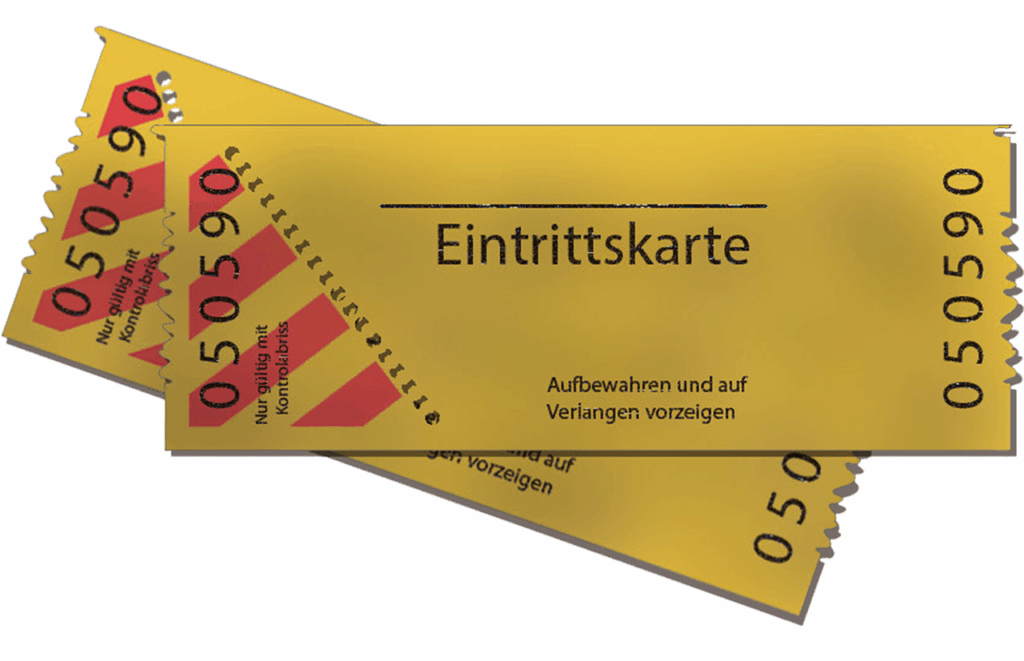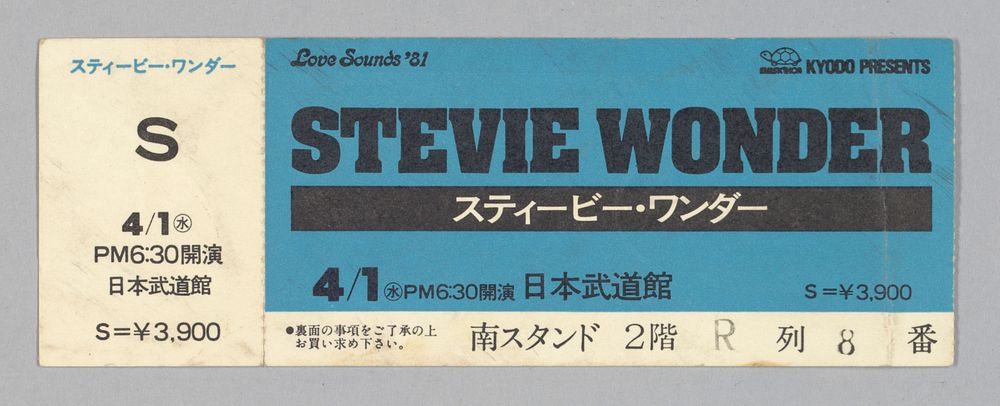
In an era dominated by instantaneous digital transactions and fleeting virtual experiences, the humble physical ticket stub has largely faded from our pockets, wallets, and scrapbooks. Once a ubiquitous souvenir, a small, tangible testament to a night out, a concert’s roar, or a game’s triumph, these printed slips of paper have become increasingly rare. Yet, as with many things that recede from daily life, their absence has only highlighted their profound and often underestimated value.
For many, myself included, the collection of ticket stubs was a cherished ritual, a way to chronologize life’s most thrilling moments. Back in the ’90s and early 2000s, there was immense joy in gathering stubs from movies, concerts, and events to adorn journals and scrapbooks. Who can forget the thrill of holding that ticket stub from the *NSYNC No Strings Attached tour at Madison Square Garden in 2000? It wasn’t just proof of attendance; it was a tangible anchor to a happy memory, a physical echo of the music and the moment.
The truth is, even as technology streamlines our access to events, a deep-seated human need for tangible connection persists. As NPR recently reported, there’s a growing movement to integrate physical tickets back into the experience, acknowledging that print offers a permanence that pixels simply can’t match. We’re not just buying entry; we’re seeking a memento, a story, a piece of history to hold onto. Let’s embark on a journey through the fascinating world of physical ticket stubs and discover why they continue to captivate our hearts, even in a hyper-digital age.

1. **The Deep Personal Value of Collecting Ticket Stubs**There’s an undeniable magic in holding a ticket stub, especially one that commemorates a significant event. It’s more than just paper; it’s a physical anchor, a direct link to a past experience that can instantly transport you back in time. For me, that *NSYNC ticket stub is a cherished reminder of one of the many happy times in my life, a small piece of cardboard that holds a torrent of memories.
This sentiment is far from unique. I remember meeting someone in college who had been to every tour of their favorite band for decades and had saved every single ticket in a binder, meticulously sorted by date. These stubs weren’t just proof of attendance; they were a personal archive, a timeline of dedication and joy. They serve as vivid memory cues that evoke specific emotions and recall memorable experiences, becoming physical links to personal history.
Holding onto these old ticket stubs helps you preserve vivid memories, strengthening your personal identity by serving as tangible reminders of meaningful moments. They become powerful cues that reinforce who you are and your story, reminding you of joyful times and shared experiences. This practice underscores a fundamental human desire to connect with and remember our past, turning transient moments into permanent keepsakes.
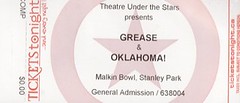
2. **The Digital Shift: A World Without Physical Tickets**However, the landscape of event access has dramatically transformed. If you’ve attended a concert or sporting event recently, you’ve likely noticed a significant absence: the printed ticket. Like countless other facets of society, event tickets have largely gone digital, replacing the satisfying tear of a stub with a quick scan of a phone screen. This shift, while convenient, has left many, myself included, feeling a sense of loss.
The move towards digital tickets, while efficient, has inadvertently stripped away a cherished aspect of the live music and event experience. It’s functional, undoubtedly, but it often lacks the emotional resonance of a tangible item. Where is the proof of attendance that can be proudly displayed, tucked into a journal, or revisited years later?
This change has led to a yearning for that physical connection. The sentimental value of physical ticket stubs seems to have dwindled in the modern era, replaced by digital barcodes and e-tickets that, for many, fade into obscurity after the event. The tangible connection between fans and artists that once thrived through ticket stub collections now faces extinction, leaving nostalgic enthusiasts mourning the loss.
Read more about: The Billion-Dollar Secret: Uncovering How Movie Theaters Make a Fortune Beyond Ticket Sales
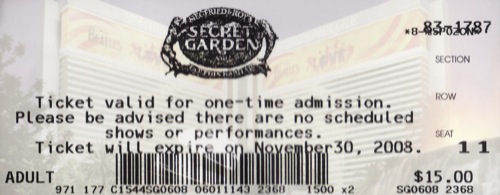
3. **The Resurgence of Souvenir Tickets: A Business Opportunity**Despite the digital deluge, the inherent value of physical tickets is not entirely lost on event organizers. In fact, NPR recently reported that some sporting events and musical venues are integrating physical tickets back into the mix, recognizing the enduring demand for tangible mementos. This isn’t just about nostalgia; it’s about smart business.
Rafael Nam relayed a story of a “diehard Texas Rangers” fan who had tickets to the World Series but lamented not having anything physical to commemorate the game. Teams and concert promoters are now seeing a business opportunity in offering souvenir paper tickets, selling them for an astounding $15-20 each. While this extra price may seem steep for something that used to be standard, for fans like the Texas Rangers supporter, it becomes the perfect keepsake.
As the Rangers fan put it, “This is something you can look back on and say, ‘Hey, I was there. This is where I sat,’ you know, [it] just brings back memories and stuff like that.” Print has permanence, and people are yearning for that connection. Companies like Fort Smith, Arkansas’ Weldon, Williams & Lick (WW&L) specialize in this service, with their president Ron Wilson stating, “Not just getting a ticket to get in the game, but really, we now have a chance to impact the way they interact and the way they experience live entertainment before, during, and after the event.”
Evan Gitomer, WW&L’s chief revenue officer, further elaborated, “People still want to go to events, they want some type of Memento attached to it.” This insight has led them to create the concept of souvenir ticketing, engaging with audiences, universities, and professional sports teams who are “looking for that [other] level of connection” and a “simple way of tying in a little bit of that nostalgia element of having something physical.”
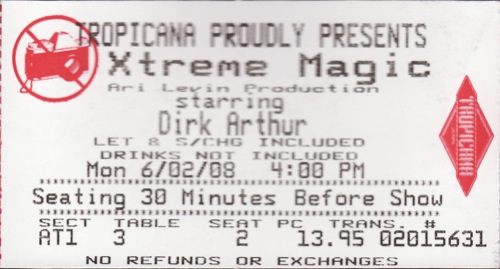
4. **The “Ticket Time Machine” Idea: Preserving Memories in a Digital Age**The frustration of missing out on a physical memento for a truly special event led to an innovative idea: the “Ticket Time Machine.” This concept was born from a personal experience that perfectly encapsulates the modern dilemma of digital tickets versus the desire for tangible keepsakes.
On a regular day in June 2017, I attended a Miami Marlins game, which turned into an extraordinary event when Edison Volquez pitched a no-hitter. The excitement was immense, but I only had a mobile ticket. The Marlins, understanding the moment’s significance, announced they would print a commemorative ticket for anyone with a mobile or print-at-home ticket. I asked if they could print “Edison Volquez no-hitter” on it, which they couldn’t, but it was still a great souvenir.
However, this promising start quickly gave way to disappointment. Weeks later, back at a Marlins game, my request for a printed ticket for another print-at-home purchase was denied. The next day, at a concert with my nephew for his very first show, a request for a printed ticket for his mobile pass was also met with a “couldn’t.” These repeated roadblocks highlighted a glaring gap in the system.
That’s when the idea for Ticket Time Machine emerged. The premise is simple yet profound: Not everyone collects tickets, but those that do should be able to continue this cherished hobby, even in the face of changing technology. Music and sporting events create unparalleled feelings and memories, and having a physical reminder helps keep those experiences alive, bringing a smile to your face years later.
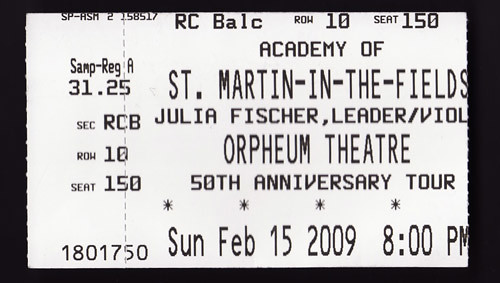
5. **The Power of Nostalgia and Emotional Connection**Have you ever noticed how a particular scent, a forgotten melody, or a faded photograph can instantly transport you back to a specific moment in time? That, right there, is the profound power of nostalgia and emotional connection. These sensations aren’t just fleeting; they are potent memory triggers, awakening vivid experiences and deeply embedded feelings.
Physical items, such as concert ticket stubs or childhood keepsakes, serve as tangible links to your past. They are not merely objects but gateways to a time when life might have felt simpler, more joyful, or intensely poignant. When you hold a concert ticket stub, it’s not just a piece of paper; it’s a direct conduit to the roar of the crowd, the opening guitar riff, and the shared excitement of the moment.
These items evoke warmth, a sense of belonging, and often a bittersweet longing for what once was, all of which work to strengthen your sense of identity. They remind you of pivotal relationships, significant milestones, and the myriad small moments that have cumulatively shaped who you are today. Holding onto these mementos is an act of preservation, keeping your memories alive and allowing you to reconnect with your personal history whenever the mood strikes or a comforting boost is needed.
Understanding the deep emotional significance of these items can further deepen your appreciation for their role in preserving your personal narrative. They are irreplaceable parts of your story, echoing moments that might otherwise fade.
Read more about: The Enduring Roar: 14 Best Luxury Cars of 2025 Still Offering the Mighty V8 Engine

6. **How Memory Cues Help Preserve Personal Identity**Memory cues are far more than just reminders; they serve as vital anchors that play a crucial role in helping you maintain a clear and continuous sense of who you are throughout your life. They forge an unbroken chain, connecting your past experiences directly to your present self, thereby consistently reinforcing your personal identity amidst the ebb and flow of change.
While digital archives, such as photo albums or online journals, are excellent tools for preserving key moments, tangible items offer a distinct kind of reinforcement. Sensory triggers – the familiar scent of a childhood toy, the texture of a worn ticket stub, or a favorite song – possess an extraordinary ability to immediately evoke memories that powerfully reaffirm your sense of continuity. These cues allow you to reflect on your growth, your evolving values, and the significant relationships that have defined your journey.
By actively engaging with both tangible objects and digital memories, you create a comprehensive and robust system for understanding and reinforcing who you are. The integration of various memory prompts, whether physical or virtual, ensures that your personal narrative remains cohesive and accessible. Ultimately, memory cues are the threads that weave together your life’s experiences, ensuring your personal identity remains resilient, authentic, and deeply rooted over the years.
Read more about: The Billion-Dollar Echo: How Savvy Brands Are Monetizing Nostalgia to Capture Hearts and Wallets
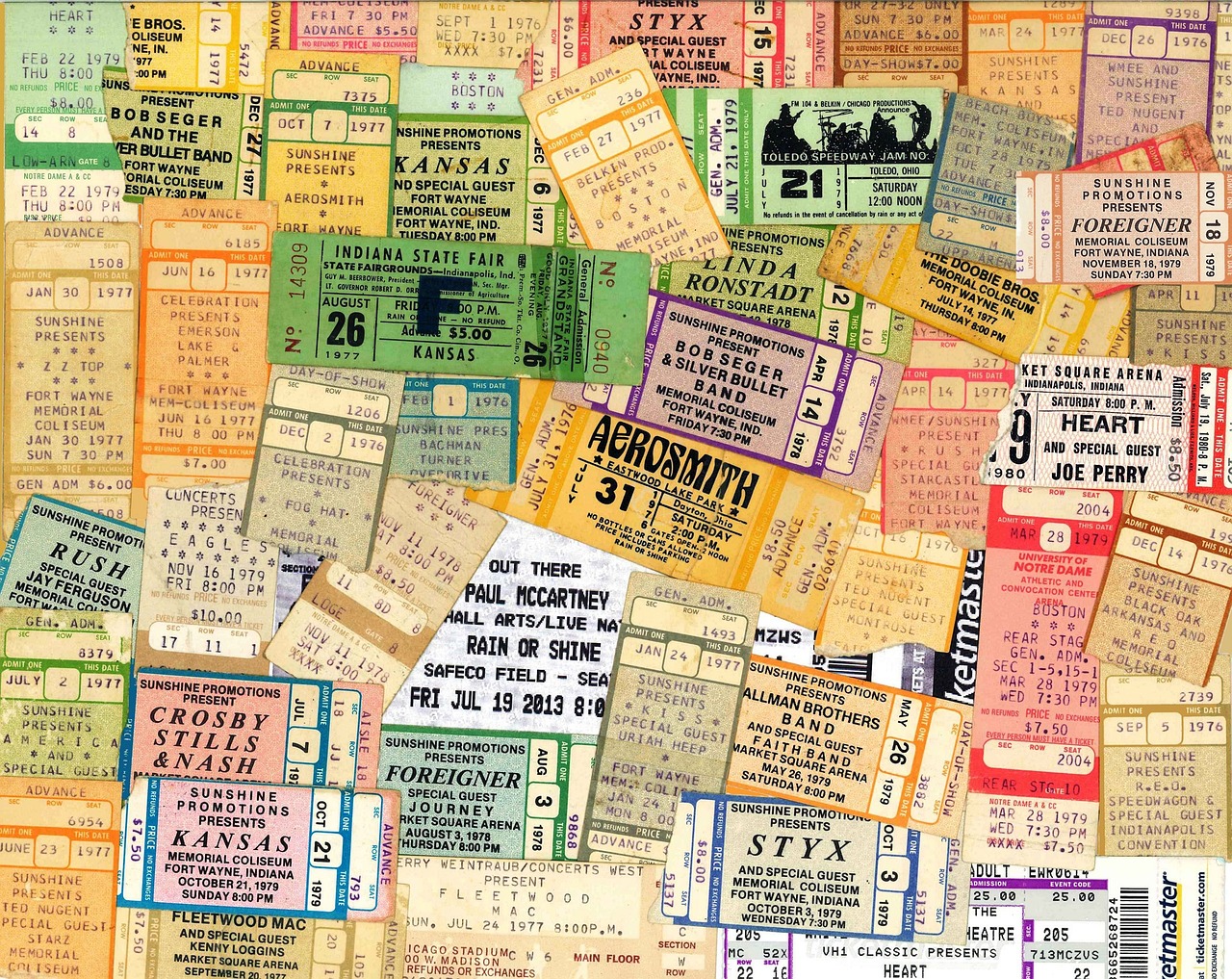
7. **The Psychological Significance of Tangible Reminders**Tangible reminders, whether they are photographs, cherished keepsakes, or personal mementos like a well-preserved ticket stub, wield immense psychological power. They serve as physical anchors, grounding your mind in the past and enabling you to vividly relive the memories and emotions intrinsically tied to specific, impactful moments. These objects are not passive; they are active catalysts for recollection.
While digital archiving offers unparalleled convenience for storing countless digital versions of these reminders, there’s a distinct difference in the experience of holding an actual object. The tactile sensation, the visual details, and the sheer physicality of an item can evoke deeper, more visceral feelings than merely swiping through a screen. This connection to the physical world enhances the memory retrieval process, making it more robust and emotionally resonant.
The concept of minimalist collecting encourages you to thoughtfully select meaningful items rather than indiscriminately accumulating clutter, ensuring that each keepsake holds genuine significance and power. These physical objects act as potent sensory triggers, making memories not only more vivid but also more accessible to your conscious mind. By curating a thoughtful collection of tangible reminders, you actively reinforce your personal history and maintain a concrete link to your experiences, fostering an invaluable sense of continuity and bolstering your identity.
Read more about: Enduring Bonds: What Hollywood’s Longest Marriages Teach Us About Lasting Love

8. **The Role of Social Bonds and Shared Experiences**Beyond personal introspection, physical ticket stubs often carry the weight of shared experiences and the strength of social bonds. When you attend an event with friends, family, or loved ones, you’re not just creating individual memories; you’re forging collective moments that deepen your connections and solidify your sense of shared identity. These powerful memories, fueled by mutual participation in adventures, leave an indelible mark on your emotional landscape.
These shared moments frequently transform into meaningful keepsakes, with the ticket stub itself becoming a powerful symbol of your social bonding. It’s a physical artifact that, upon later rediscovery, instantly recalls not just the event itself, but *who* you were with, the conversations, the laughter, and the camaraderie that made the experience truly special. It becomes a touchstone for collective reminiscence.
To deepen your understanding of this profound connection, consider these key aspects: first, the creation of lasting memories through shared adventures highlights your collective journey, cementing those experiences in the minds of everyone involved. Second, the act of reminiscing about these experiences together actively strengthens emotional bonds, reinforcing the ties that bind you. And finally, the transformation of shared moments into tangible mementos, like a saved ticket stub, serves as a enduring reminder of your social bonding, ensuring those cherished collective memories endure long after the final curtain call or whistle blows.
In the digital age, where concerts, games, and shows often begin and end with a quick tap on a smartphone screen, the humble physical ticket stub has largely retreated from our everyday lives. But, as we’ve seen, its absence only makes the heart grow fonder. This next section delves into the evolving landscape of ticketing itself, exploring the various forms paper tickets now take, why they stubbornly persist, the irresistible pull of their digital counterparts, and how innovators are finding ways to blend the best of both worlds.
Let’s unravel the ongoing story of event entry, from the tangible to the virtual, and discover why, even in 2025, there’s still so much more to discuss beyond the barcode.
Read more about: Beyond the Garage: A Deep Dive into the Thriving World of Car Clubs and Automotive Communities

9. **What Counts as a Paper Ticket?**When we talk about a “paper ticket” in today’s world, it’s not always the foil-stamped, perfectly perforated stub of yesteryear. The definition has become far more nuanced, reflecting the varying approaches venues and organizers take to event entry. Understanding these distinctions is key to appreciating the different forms of physical keepsakes still out there.
The most common iteration you’ll encounter these days is the “printed-at-home ticket.” You buy your access online, click print, and out comes a sheet of paper with a barcode. While perfectly functional for entry, let’s be honest, it doesn’t quite carry the same magic as a robust, colorful stub from a 1990s rock concert. These printouts are great for convenience, letting you bypass will-call lines, but they rarely end up in a scrapbook.
Then there are the highly coveted “souvenir-style tickets.” These are the real gems for collectors: heavy card stock, vibrant branding, perhaps even a hologram stamp or special thermal ink. Often mailed to you for a fee, these are popular with die-hard fans and festival-goers who absolutely crave something tangible to hold onto. Beyond their aesthetic appeal, their intricate designs often make them much harder to fake, sometimes even granting exclusive VIP access.
There’s also a curious “gray area” of kiosk-printed tickets, often on thin, receipt-like paper. Technically, they’re paper, but they often scream “grocery store” more than “showbiz.” However, they are valid! Ultimately, from baseball games to Broadway, the paper ticket hasn’t vanished entirely; it’s simply evolved. The material may vary, but as the saying goes, “if it scans, it stands.”
Read more about: Are You Driving a ‘Show-Off’ Vehicle? The Top 10 Car Brands Prone to Speeding Tickets
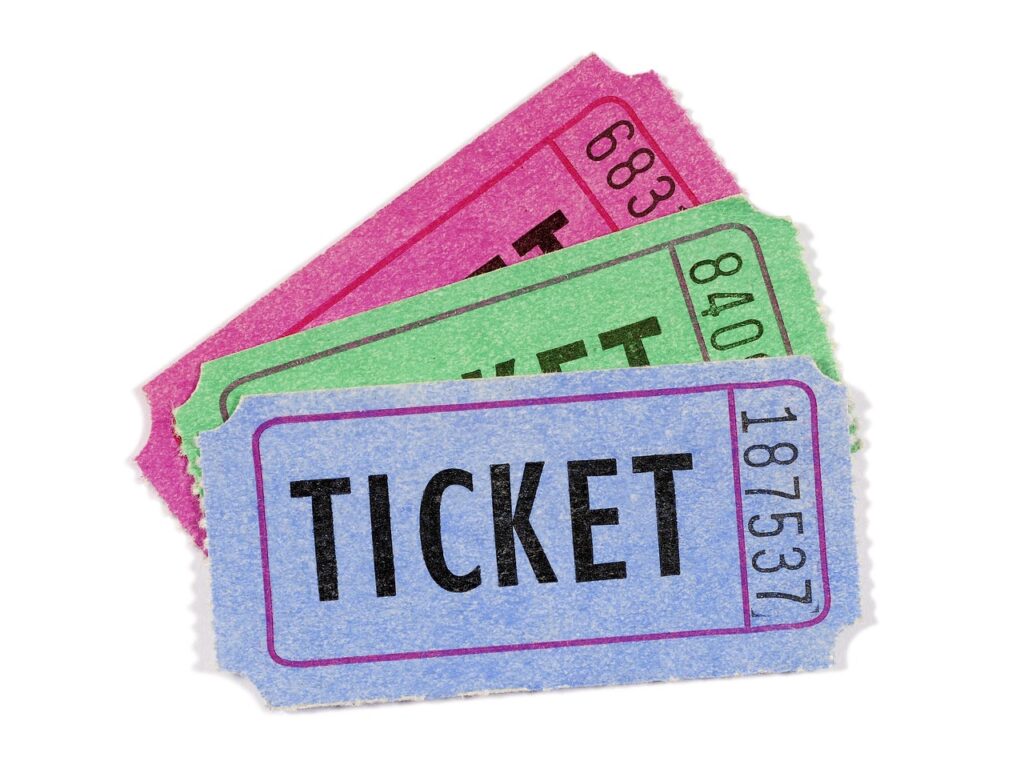
10. **Who Still Uses Them—and Why**Despite the undeniable surge of digital passes, physical tickets haven’t entirely exited the stage. They continue to thrive in specific corners of the entertainment and travel industries, often for reasons that go beyond mere technological lag. It’s a testament to their enduring utility and the diverse needs of audiences and venues alike.
Broadway theaters, especially the older, more venerable establishments, are a prime example of where paper tickets remain prevalent, even preferred. Many historic venues, with their charming aesthetics, may have limited mobile scanning capabilities. There’s also a certain timeless elegance in clutching a printed Playbill and a matching physical ticket stub, connecting today’s theatergoer to generations past.
Furthermore, you’ll find paper tickets alive and well at smaller-town events, community theaters, and local nonprofit performances. These organizations often operate on tighter budgets and might not have the resources or the interest to invest in complex mobile ticketing systems. For them, a simple, physical ticket handed over at the door is a straightforward and often more personal approach.
International travel also frequently presents scenarios where a printed ticket is not just an option, but a necessity. Whether it’s a rail pass across Europe or an event in a country with specific tech restrictions or unreliable mobile networks, having a physical printout can save you from potential headaches. And let’s not forget the “I don’t trust apps” crowd—a significant demographic that finds comfort and security in a physical item that requires no Wi-Fi or battery life.
Read more about: 14 Shocking Celebrity Gaffes That Erased Millions in Brand Deals

11. **The Case for Digital-Only Tickets**While paper tickets hold a nostalgic charm, we can’t ignore the undeniable “pixel power” that digital-only tickets bring to the table. Once you’ve experienced the swift and seamless entry a phone scan offers, it’s often difficult to imagine going back to the old ways. This paperless push is fueled by compelling advantages for venues, artists, and, crucially, for fans.
Convenience truly is king in the digital ticketing realm. You simply can’t lose something that resides securely in your email, your digital wallet, or your official ticketing app. Whether you’re racing against traffic or enjoying a last-minute dinner, your smartphone becomes the effortless gateway to the event. The days of frantically searching through drawers or realizing your ticket is still on the fridge are thankfully long gone.
Beyond personal ease, eco-friendliness stands as a significant argument for digital tickets. Consider the millions of tickets printed annually for major tours, sporting events, and festivals—many of which are promptly discarded. Digital alternatives drastically reduce paper waste, cut down on ink consumption, and eliminate the environmental impact of shipping. For those mindful of sustainability, it’s a clear win-win situation.
The scalability of digital tickets also makes them absolutely essential for managing massive events. Imagine distributing tens of thousands of entries for a stadium concert or processing last-minute rush tickets for a popular show. Digital systems allow for the instantaneous distribution and management of countless entries with a mere click, a feat far more efficient and logistically sound than traditional mailing or printing processes.
And let’s not overlook security, a critical factor for both event organizers and attendees. Digital tickets are inherently tougher to forge than physical ones. Advanced features like barcode refresh technology, robust transfer tracking, and secure, locked ticket apps actively prevent fraud and deter shady resale practices. For organizers, this translates into fewer logistical nightmares and a greater sense of peace of mind, knowing that legitimate fans are the ones entering the venue.

12. **But There’s Still Something About Paper**Even with the digital revolution in full swing, there’s an almost magical quality about physical tickets that continues to captivate. Despite all the digital dazzle and undeniable convenience, paper tickets haven’t completely vanished from our collective consciousness—and for deeply rooted reasons. It’s more than just entry; it’s about connecting with something profoundly special.
Nostalgia, without a doubt, hits hard when you hold a tangible ticket stub. For dedicated collectors, meticulous scrapbookers, and simply sentimental souls, these paper artifacts are miniature time capsules. They’re often creased, perhaps a little smudged, maybe even bearing a tear at the edge – all signs of a life lived and a memory made. Decades later, these unassuming slips of paper possess the power to instantly transport you back to the roar of the crowd, the electrifying opening guitar riff, or the collective gasp during a dramatic Act One twist. A QR code, unfortunately, just can’t do that.
The concept of a “souvenir status” is inherently locked into a physical ticket. Some savvy artists and theater productions keenly understand this enduring appeal and cleverly offer limited-edition printed tickets. These aren’t just any tickets; they’re often meticulously designed with bespoke artwork, elegant foil accents, or even printed using old-school thermal methods. Such keepsakes transcend mere entry passes; they become cherished mementos, frequently saved with the same reverence as a signed T-shirt or a commemorative Playbill.
Ultimately, for a significant number of people, there remains an irreplaceable comfort in having something you can physically hold. There’s no battery required, no app to perpetually update, and certainly no agonizing over a lost Wi-Fi signal. It’s just a straightforward piece of paper that unequivocally means “you’re going.” In this increasingly virtual world, there’s a simple, almost ancient, kind of magic in that tactile certainty. In an era dominated by swipes and scans, a beautiful paper ticket feels oddly luxurious, much like savoring a vinyl record in a Spotify-dominated soundscape. Perhaps not always the most practical choice, but undeniably priceless in its emotional resonance.
Read more about: Hollywood Heartbreakers: 14 Major Actors Who Absolutely Refused to Share the Screen Again

13. **When You Need a Paper Ticket**Your smartphone is, without question, a modern marvel of convenience—until, that is, its battery dies, the app glitches unexpectedly, or you lose signal at the most critical moment. It’s precisely in these all-too-common scenarios that a good old-fashioned paper ticket truly earns its keep. While digital options have undeniably taken the lead, there remain vital situations where a physical ticket isn’t merely a nostalgic preference; it’s an absolute necessity.
Consider the challenges of traveling abroad. Not every venue in every country, particularly in smaller towns or regions with less developed tech infrastructure, is fully equipped for seamless mobile scanning. Rural theaters, local cultural events, or international festivals may still operate predominantly on paper-based systems. Arriving with a printed ticket can effortlessly circumvent awkward language barriers or connectivity issues at the gate, ensuring a stress-free entry into your eagerly anticipated event.
Furthermore, certain venues or specific ticket providers continue to mandate that attendees print their tickets in advance. This is particularly common for reserved seating areas, exclusive access points, or traditional will-call pickups. If your confirmation email explicitly states, “Print and bring with you,” it’s always wise to heed that instruction. Attempting to bypass the system with a mobile screen could easily lead to an unwelcome showdown at the box office and potentially missing the beginning of your show.
And let’s be frank: tech fails are an inherent part of modern life. Phones invariably die, apps mysteriously crash, and even venue scanners can occasionally go down. In such moments of digital distress, a simple printed backup can be the crucial difference between enjoying your favorite artist from your seat and desperately pleading your case to an already overwhelmed usher. Especially when attending major events like a sprawling festival, a high-stakes playoff game, or a highly anticipated Broadway premiere, carrying a printed ticket isn’t just a precaution; it’s genuinely smart insurance against the unpredictable whims of technology.
Read more about: Hit the Road, Not Your Wallet: America’s Top Affordable Car Camping Adventures for Under $25 a Night
14. **Risks & Scams: Paper vs. Digital**Whether you’re proudly holding a glossy souvenir stub or swiftly flashing a QR code on your phone, tickets, much like currency itself, are unfortunately susceptible to fraudulent reproduction. However, the specific risks and common scamming methods can differ significantly between physical and digital formats. Being aware of how these nefarious operators work is your best defense against potential frustration and a considerable hole in your wallet.
Physical tickets, despite their nostalgic appeal, are generally easier to forge. Modern counterfeiters have advanced far beyond simple photocopying; they can now create surprisingly authentic-looking fake barcodes, replicate intricate venue logos, and even mimic perforated edges with alarming accuracy. Unscrupulous online marketplaces and shady resellers often exploit unsuspecting buyers who are specifically seeking that tangible, “real” keepsake, only to deliver a worthless fake.
However, digital convenience does not equate to digital infallibility. Digital tickets are not entirely foolproof either. “Screenshot scalping” has emerged as a particularly insidious modern menace. Here, a scammer purchases a single valid ticket, takes a screenshot of its unique barcode or QR code, and then illicitly sells that identical screenshot to multiple unsuspecting individuals. The grim reality? Only the very first person to present that specific barcode at the gate gains entry. Everyone else who bought the same screenshot is denied, a cruel trick that is often impossible to detect until it’s far too late.
It’s also crucial to “beware the nostalgia trap.” Some particularly cunning scammers exploit the inherent charm and emotional pull of old-school paper tickets. They might offer enticing “limited-edition” printed tickets that promise an unparalleled memento, only to send either expertly crafted fakes or, even worse, nothing at all. If an offer for a ticket sounds just too cool, too vintage, or simply too good to be true, it’s absolutely imperative to pause, exercise extreme caution, and conduct thorough due diligence before clicking that “buy” button.
The bottom line for both paper and digital tickets remains consistent: always, *always* stick with trusted and official sources. Purchase directly through authorized vendors such as Ticketmaster, Telecharge, or the event’s own official website. Many reputable ticket outlets also offer verified resale options, which provide a safer alternative. Steer clear of unverified third-party sellers on social media or obscure forums unless you’re prepared to roll the dice—and potentially lose—your hard-earned money and your much-anticipated experience.
Read more about: Unlocking Financial Freedom: 13 Proven Strategies to Erase Debt and Save Thousands in Interest
15. **Hybrid Models: Best of Both Worlds?**In a world that constantly toggles between the instant gratification of touchscreen convenience and the comforting allure of tactile nostalgia, hybrid ticketing models are increasingly emerging as the ideal happy medium. Whether you identify as a meticulous scrapbooker who cherishes every stub or a minimalist who prefers a phone brimming with digital passes, some innovative events are now allowing you to truly have your cake and, well, frame it too. This thoughtful approach aims to cater to the diverse preferences of modern event-goers.
One popular hybrid approach is the “digital ticket + mailed keepsake” model. Many Broadway productions, high-profile concerts, and exclusive special events now offer fans the option to receive an optional souvenir ticket. These might be beautifully designed, glossy, foil-stamped, or even personalized stubs, which are either mailed directly to your door after the event or available for purchase alongside your initial ticket. This means you gain swift entry by simply scanning your phone, but you still walk away with a tangible, meaningful memory that transcends the ephemeral nature of your digital inbox.
Another incredibly useful innovation is the “print it when you need it” option, which is becoming available at more venues and box offices. Did you forget to print your ticket at home? No problem! Kiosks or dedicated service desks can now swiftly generate a paper version on the spot. This feature is an absolute lifesaver when your phone battery is critically low or when, let’s be honest, your grandma adamantly insists she “needs something to hold” to fully feel part of the experience.
Festivals, known for their expansive and multi-day nature, are also getting increasingly sophisticated. Many have cleverly ditched traditional paper tickets entirely in favor of issuing wristbands, advanced RFID badges, or easily scannable lanyards. These ingenious solutions expertly combine secure access control with vibrant branding, making initial entry and subsequent re-entry smoother and more efficient than ever before. As an added bonus, these items often double as highly sought-after souvenirs; festival-goers love to collect and wear them like badges of honor, proudly displaying their attendance.
Ultimately, an increasing number of venues and leading ticketing platforms are now offering a genuine choice at checkout: full digital, traditional mail, or convenient print-at-home. This flexibility means you can embrace a completely digital experience for maximum convenience, or deliberately opt-in for something physical without having to sacrifice the numerous perks that technology offers. It’s a clear move away from a rigid, one-size-fits-all policy, offering instead a refreshing degree of flexibility for fans with varying styles, levels of tech-trust, and desires for tangible mementos.
So, are paper tickets still a thing? Absolutely—but they’re constantly evolving. While digital access dominates for its unparalleled ease and remarkable efficiency, the physical paper ticket has certainly not taken its final bow. Far from it! It steadfastly lives on as a cherished keepsake, a crucial backup plan, a deeply personal preference, and, in many specific scenarios, an undeniable necessity. Whether you choose to swipe, scan, or carefully stash your way into a show, what truly matters most is the incredible experience that unfolds once you’re inside. From the intricate artistry of holographic stubs to the fleeting utility of QR codes that vanish after a single use, tickets may continually change their form, but their fundamental function remains steadfastly the same: to grant you access to a moment absolutely worth remembering. So, the very next time you find yourself booking seats for that epic concert, that dazzling Broadway smash hit, or that vibrant local festival, take a moment to ask yourself—what kind of memory do you truly want to take home with you? A fleeting notification in your phone, or something enduring you can proudly frame and revisit for years to come?


